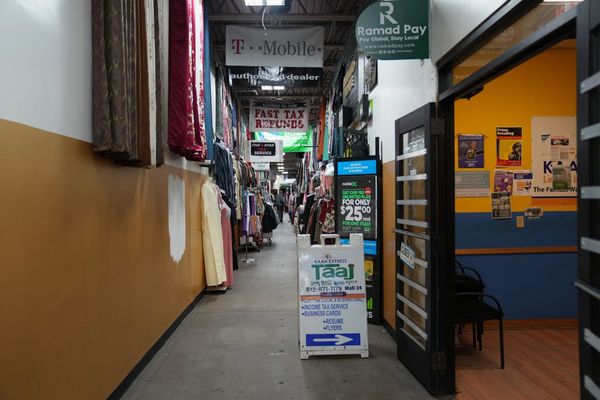
Every spring since at least 1865 the rare birds of Māori legend have been making their annual hikoi to nest in a remote West Coast river in Whataroa
No one knows quite how or why they do it.
But once a year in spring, lone white herons from all over New Zealand find their way to the same tiny spot on a remote West Coast river, abandon their solitary ways and create a village to raise their young.
In the process, they transform themselves with their ethereal breeding plumage into the dreamlike creatures of Māori legend - he kōtuku rerenga tahi - the flight of the white heron, seen only once.
The rare birds have been making their annual hikoi since at least 1865, when Westland surveyor Gerhard Mueller stumbled on their summer breeding colony and reported the marvellous spectacle in a letter to his wife.
“Beautiful kōwhai trees abounding and almost all shrubs in flower made this a real pleasure trip but the crowning glory was a cranery which I discovered up the river and this was a glorious sight.
“Imagine seeing around you 50 to 60 cranes sitting on high pines and lower trees, all in a circle of about 150 yards, their pure white feathers shining in the sun.
“They were not at all shy and kept up a continual 'pappering' among themselves and seemed more astonished at me than afraid.”
A century and a half later, the kōtuku are still stunning visitors and the 'pappering' is louder than ever.
The herons share their nursery with lively shag neighbours who nest among them and royal spoonbills, perched higher up in the dress circle.
Dion Arnold, whose family runs tours to the restricted sanctuary under a DOC concession, says kōtuku numbers have doubled since Mueller's day.
“We've counted 51 nests this year, so that's over a hundred birds, they'll each raise at least one chick; and there's a lot more younger birds around the country that'll come back when they're ready to breed.”

The total population - now estimated at about 200 - was not always so healthy.
Once the nesting site was discovered, the kōtuku were repeatedly raided for their delicate breeding plumes to grace women's hats.
By 1941, the colony was down to just four nests, and the government stepped in: the site was declared a Flora and Fauna Reserve and patrolled at breeding time.
Arnold, who's from a fifth-generation Whataroa family, says his family always knew where the kōtuku went for summer and how to get to the remote spot.
“We would provide transport at times for government officials, and ornithologists and scientists; in those days it was a day's mission to get out there - nothing like nowadays.
“Apart from that no one got the chance to get in there, and my father, mother and a couple of Dad's brothers always thought it would be a wonderful thing to encourage people to stop here and to share the experience and put Whataroa on the map.”
But creating a tourist attraction in a nature reserve - especially one that had been plundered in the past - was always too big a hurdle.
Until in 1987, along came DOC, merging the Wildlife Service and other departments Arnold senior had worked with on predator control.
And DOC, in need of revenue and a good news story in a region upset by job losses, called for tenders for a concession to take tours into the kōtuku sanctuary.
“It was just a one-year contract, a trial to see how things would go, with very limited numbers and resoures, but Dad and his brothers were lucky enough to win that first concession and it's grown from there,” Arnold says.
Thirty years on and the small family business is now one of South Westland's best visitor drawcards.

The original boat trip up the Waitangiroto stream has given way to a mini-van drive to the reserve after the river changed course, and the Arnolds built an access road through private farmland.
But the 15-minute walk through primeval wetland forest loud with birdsong is still the prelude to the sight that stopped Mueller in his tracks.
On that same tranquil bend in the river, framed by tall flax and native trees, a hundred shining kōtuku - elegant feathers wafting over their shambolic nests - tend to their yammering chicks in the spring sunshine.
“We are starting to see [tourists] again - they're back. And that's great because Covid hit us quite hard” - Dion Arnold says
“The birds usually start arriving in mid-September, but this year they were a little earlier; the first one arrived on the 9th then slowly over a few weeks they just filter in and settle into finding a mate and building a nest.”
Unusually, both male and female kōtuku develop the same exemplary 'nuptial plumes'.
And they share the parenting job, Arnold says.
“They're quite egalitarian in that way. They take turns hunting. They'll fly kilometres to Okarito lagoon or local rivers and lakes to bring back fish or frogs and other food for the babies.”
This spring has brought back another species of welcome visitors to South Westland and the Arnolds: overseas tourists.

“We are starting to see them again - they're back. And that's great because Covid hit us quite hard,” Arnold says.
“We've been in survival mode for the past two years but we've always had good support from Kiwi travellers, and we made it through. We even got to meet some Aucklanders, and they discovered the South Island.”
In a well-concealed timber hide, visitors peer through binoculars and marvel at the close-up view of kōtuku domestic life on the nest, while little shags splash and play in the golden waters below.
In eight to 10 weeks, the powder-puff chicks will be as big as their parents, ready to fly and fend for themselves.
And by March, all the kōtuku will be gone from their summer place for another year.
But like the international tourists, they'll be back, Arnold says.
“They always come back to the same bend in the stream. The site's changed a bit over the years, but that doesn't faze these birds - this is home.”







